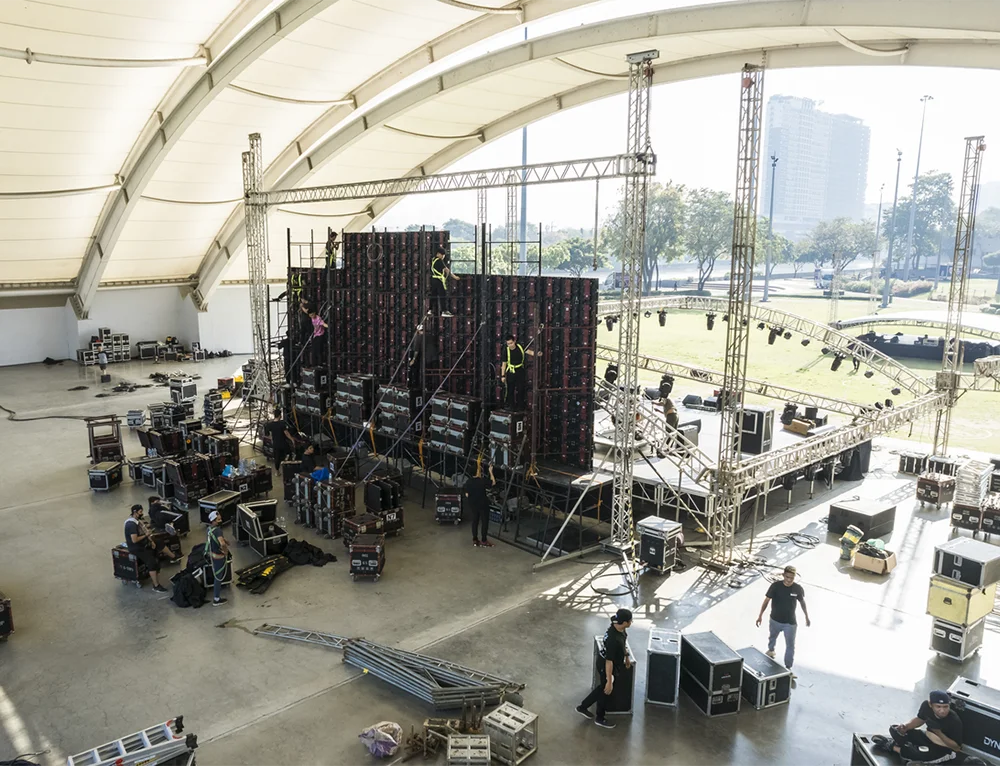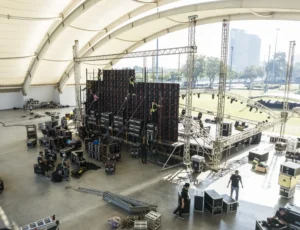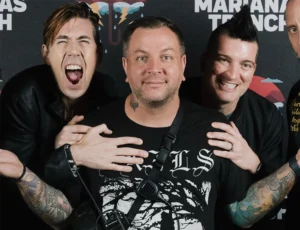Quick Summary
In 2025, concert logistics planning defines the success of every tour. From routing and advancing to crew travel and show-day coordination, effective logistics turn complex operations into predictable, repeatable workflows. This guide breaks down each phase of concert logistics — pre-tour preparation, advancing and routing, live-day execution, and post-show settlements — so touring teams can stay synchronized, cut downtime, and keep every show running on schedule.
Table of Contents
Why Concert Logistics Planning Matters in 2025
It’s 6 a.m. in Milan. The last truck from last night’s show is still crossing the border, the lighting crew is already unloading at the next venue, and your inbox is filling up with catering updates and hotel changes. Nothing about this is random — it’s the product of precise concert logistics planning.
Behind every flawless show lies hundreds of coordinated decisions: which route to drive, where to stage the trucks, how to time load-in, and when to pay local crews. As tours scale across continents, those details multiply fast — and even one missed schedule can cascade into hours of delay or thousands in lost revenue.
Global concert revenues are projected to rise from US $38 billion in 2024 to over US $60 billion by 2034, driven by packed calendars and complex routing.¹ But growth brings pressure: tighter turnaround times, costlier transport, and higher expectations from fans and artists alike.
That’s why logistics planning has become the silent engine of touring success in 2025. Done right, it prevents chaos, protects crew wellbeing, and turns unpredictability into a well-rehearsed rhythm that keeps every show on time — and every tour on track.
2. The Concert Logistics Lifecycle (4 Key Phases)
Concert logistics isn’t a single checklist — it’s a rhythm that moves through four connected phases. Each one builds on the last, shaping how smoothly a tour runs from the first truck load to the final settlement.
Every experienced tour manager knows that the show-day calm you see from the audience starts months earlier — with routing spreadsheets, advance calls, and endless coordination between transport, venues, and crew. Here’s how that lifecycle unfolds on the road.
2.1. Pre-Tour Planning — The Foundation of Every Smooth Show
Before the first load-in, logistics planning begins with the map. This is where the entire tour is built — choosing viable routes, sequencing dates, balancing crew rest, and staying realistic about drive times.
Start by defining the essentials:
- Routing & Venues: Align hold dates with travel distances, load-in accessibility, stage capacity, and local crew availability. Prioritize venues that fit production size and turnaround times between cities.
- Crew & Transport: Plan for both cost and comfort — nightliners, trucks, flights, and local hires.
- Vendors & Permits: Secure transport and backline partners early; check customs and border requirements for international runs.
- Budget & Timing: Factor in buffer days and load-out transitions.
A well-planned routing calendar saves thousands in overtime and fuel. Venue compatibility determines not just audience capacity, but how easily your trucks, crew, and equipment can move from city to city. Think of it as the “tour DNA” — everything else depends on it.
2.2 Advancing & Routing — Turning Plans Into Real-World Movements
Once dates are locked, advancing translates plans into motion. This is where the conversations start: venue details, power specs, catering, stage plots, local crew calls, and travel confirmations.
Each venue introduces its own rhythm — different dock access, power specs, and security protocols. A strong advance bridges those differences long before the trucks arrive, preventing last-minute surprises that eat into soundcheck or curfew.
Each show’s logistics advance forms a chain reaction — when one city wraps, the next is already loading in. A small mistake (like missing freight clearance or a delayed truck) can ripple across the schedule.
A smart advance answers every operational question before show day:
- What time does the first truck dock?
- Who signs off on backline setup?
- Which crew stays overnight and who’s rolling out?
Using shared digital advances or tour-management tools keeps everyone aligned. Real-time updates replace frantic calls and ensure no detail gets lost between emails.
2.3. Show-Day Operations — Synchronizing Every Moving Part
When the trucks roll up, planning turns into execution. The focus shifts from scheduling to coordination — every department working like clockwork.
Load-in and soundcheck usually start before sunrise, often with overlapping crews from previous cities. Communication is everything: stage managers, FOH, lighting, security, and drivers all need the same timeline.
Clear communication channels keep show-day momentum steady. Most production teams blend radio comms for on-site coordination with messaging apps for quick updates between departments — transport, catering, and management included. When everyone’s connected in real time, small problems stay small.
Add variables like weather, local regulations, and venue curfews, and show-day logistics become a test of adaptability. The best tour managers build buffers into every call time, using shared itineraries or mobile updates to manage shifting schedules.
A great day sheet isn’t just paperwork — it’s the pulse of the tour.
2.4. Post-Show & Settlement — Wrapping Up Without Loose Ends
When the lights go down, logistics doesn’t stop — it just shifts to recovery.
Post-show tasks include teardown, load-out, cross-checking inventory, confirming truck departures, and finalizing settlements. Finance and production teams rely on accurate logistics notes to reconcile costs, especially for split bills or multi-crew tours.
Cross-department visibility is key here. When production, transport, and finance teams close the loop together — sharing final mileage, crew hours, and vendor costs — settlements move faster and future planning becomes easier. It’s how logistics turns from reactive to repeatable.
This is also the time to debrief: what worked, what didn’t, and where time or cost slipped. That reflection feeds back into planning for the next leg — turning one show’s learnings into the next tour’s efficiency.
Efficient post-show coordination is what separates a smooth tour from a stressful one. When every department wraps cleanly, everyone sleeps better on the bus.
3. Smart Tools and Templates for Concert Logistics Teams
Even the most experienced tour managers can only juggle so many moving parts at once. Between routing, travel, crew calls, and nightly settlements, keeping information current is half the battle. That’s where modern logistics tools turn coordination into clarity.
For many teams, the starting point is still spreadsheets and email threads — reliable, but fragile. One outdated version or lost attachment can derail communication between production, transport, and finance. Today’s touring teams are shifting toward digital workflows that keep everyone in sync, whether they’re backstage, on the bus, or in another time zone.
Here’s how the right tools help at each stage of logistics planning:
- Pre-Tour: Routing platforms and mapping tools visualize drive times, venue capacities, and travel costs before the first date is booked.
- Advancing: Shared templates or cloud-based forms standardize details like stage plots, crew calls, and power specs — reducing back-and-forth emails.
- Show Day: Communication apps and mobile access to day sheets keep every department aligned in real time, even as schedules shift.
- Post-Show: Integrated expense trackers and settlement exports simplify close-out, giving production and finance teams immediate clarity.
For professional touring teams, this coordination lives inside dedicated tour-management software such as Master Tour by Eventric. Instead of scattered documents, every routing update, advance, and crew change lives in one shared system — instantly accessible across desktop and mobile.
The result isn’t just convenience. It’s consistency, accountability, and a smoother touring rhythm that scales from clubs to arenas without losing control.
For a broader view on how technology connects entertainment workflows, see our article on entertainment management software.
4. How to Keep Tours Running Smoothly, City After City
Concert logistics isn’t about perfection — it’s about rhythm. Every tour develops its own tempo: plan, move, perform, reset, repeat. The goal of logistics planning is to make that rhythm predictable, no matter how many cities, trucks, or crew members are involved.
A reliable tour workflow connects three essentials: clarity, communication, and documentation. When every department — from transport to production to finance — works from the same information, you eliminate most of the friction that slows tours down.
Here’s how experienced operations leads keep their logistics tight:
- Start small. Standardize your day sheets, routing templates, and vendor lists before layering in automation or software.
- Document everything. Capture drive times, load-in notes, and cost details in one shared location — today’s notes are next month’s reference.
- Sync updates, not attachments. Replace long email chains with live itineraries that update instantly across teams.
- Review and refine. After each tour segment, debrief with crew chiefs to identify time losses or miscommunications, and adjust for the next run.
This iterative approach turns logistics into a learning system — one that evolves with every show. The more data you capture and the clearer your communication channels, the more smoothly the next tour will run.
Because at the end of the day, great logistics don’t just move trucks — they move teams.
Wrap-up
Concert logistics is what turns creativity into consistency — the unseen system that keeps every tour running on time, on budget, and in rhythm. When routing, advancing, and communication flow together, the result is a smoother show day and a calmer crew.
Touring teams that document, review, and refine their logistics turn experience into efficiency — each show feeding the next. That’s how great operations become great tours.
Ready to streamline your tour planning and keep every crew member on the same page?
Explore how Master Tour brings routing, advancing, and daily operations together in one connected platform. You can also view pricing and plan options here to find the setup that fits your touring needs.
FAQs: Concert Logistics Planning
What does concert logistics planning include?
Concert logistics covers every operational element that makes a tour run smoothly — routing, transport, accommodation, equipment handling, local crew coordination, and post-show settlements. It connects all departments so shows can happen safely, on time, and on budget.
How far in advance of a tour should logistics planning start?
For regional tours, planning typically begins 3–6 months before the first show. International runs often start earlier to secure permits, carnets, and vendor contracts. The key is to confirm routing and production specs early so advancing can begin without surprises.
What’s the difference between concert logistics and tour management?
Tour management oversees the entire operation — budgets, artist relations, contracts, and strategy. Logistics is the operational engine within that system: the trucks, flights, hotel blocks, and schedules that make the plan real.
What are the most common mistakes in concert logistics?
- Overestimating how far crews can safely travel between cities.
- Underestimating border crossing and load-in times.
- Failing to centralize updates — one outdated spreadsheet can cause hours of confusion.
- Not debriefing after each tour segment to refine workflows.
Which tools help manage concert logistics efficiently?
Touring professionals often combine mapping tools, shared communication apps, and dedicated tour-management platforms.
Master Tour by Eventric brings those elements together, letting teams update routing, crew calls, and day sheets in one connected system.



